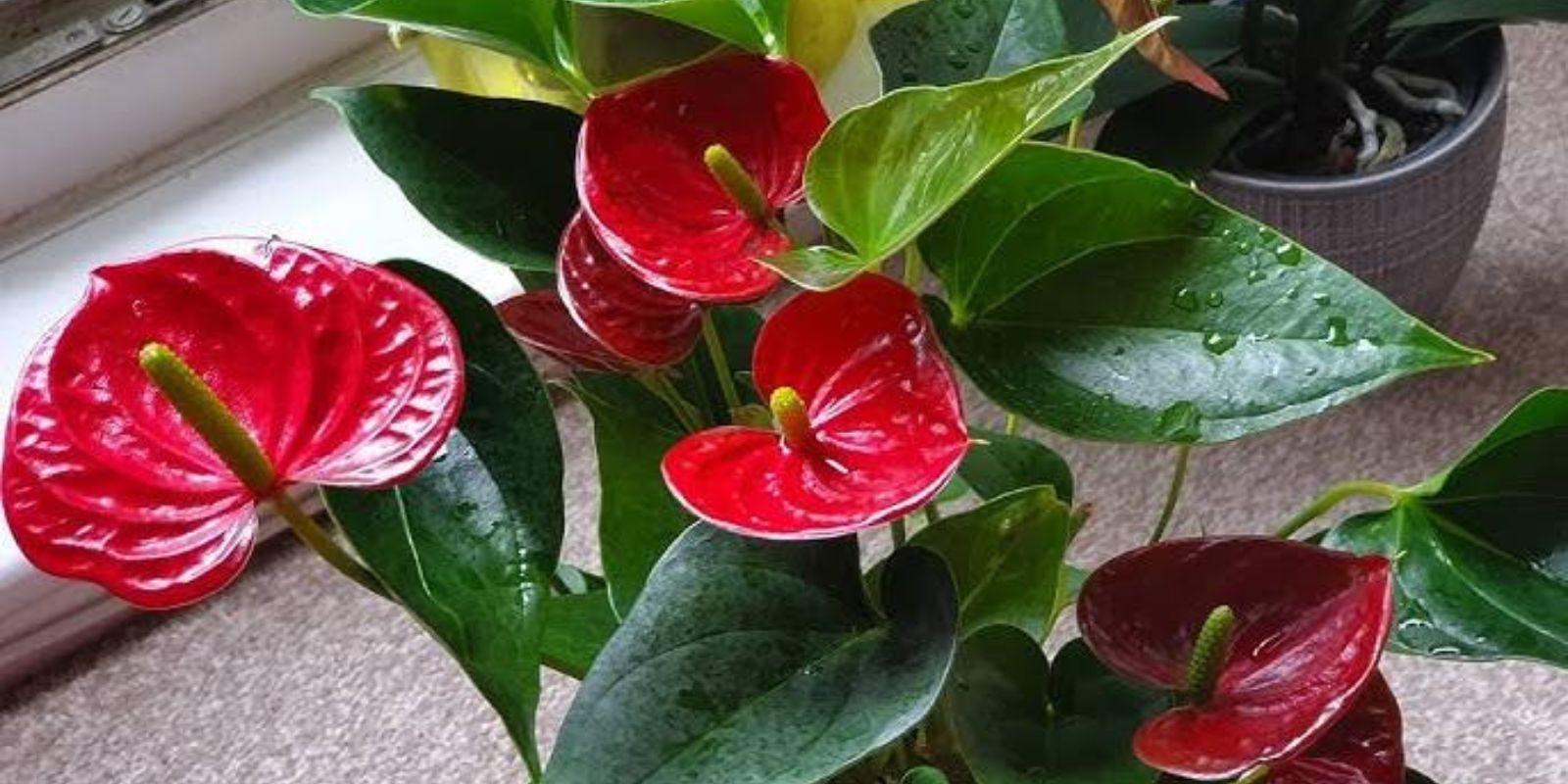Introduction
The Anthurium, also known as the “Flamingo Flower” or “Laceleaf,” is one of the most beautiful and exotic houseplants, famous for its vibrant, waxy flowers and lush green leaves. However, many plant lovers struggle to get their Anthuriums to bloom consistently. If your plant has been stuck in a foliage-only phase, don’t worry—you’re not alone! The key to encouraging Anthuriums to flower lies in providing the right care, environment, and a few secret techniques that most people don’t know about.
In this guide, we’ll walk you through everything you need to know to help your Anthurium bloom continuously, from ideal growing conditions to special fertilization tricks. By the end of this article, you’ll have all the knowledge needed to keep your Anthurium in bloom year-round!
Understanding the Anthurium’s Natural Habitat
To successfully grow and encourage blooms, it’s essential to understand where Anthuriums naturally thrive. These tropical plants originate from the rainforests of Central and South America, where they grow under the shade of larger trees, enjoying high humidity, warm temperatures, and well-draining soil. Mimicking these conditions indoors will set the stage for successful flowering.
1. Provide the Right Light 🌞
One of the most common mistakes plant owners make is placing their Anthurium in the wrong type of light. Too much direct sunlight can scorch the leaves, while too little light will prevent blooming.
Best Lighting Conditions for Anthurium Blooms:
✅ Bright, Indirect Light: Place your Anthurium near a window with filtered sunlight. An east-facing window is ideal.
✅ Artificial Grow Lights: If natural light is limited, using a grow light can supplement light requirements.
❌ Avoid Direct Sunlight: Too much sun can burn the leaves and damage the plant.
2. Maintain Proper Watering Habits 💦
Anthuriums prefer a balance between moisture and drainage. Overwatering or underwatering can lead to problems, including lack of blooms.
How to Water Correctly:
✅ Check the soil moisture: Water only when the top inch of soil feels dry.
✅ Use lukewarm water: Cold water can shock the roots.
✅ Avoid waterlogging: Ensure the pot has drainage holes to prevent root rot.
❌ Don’t let the soil dry out completely: This will stress the plant and prevent flowering.
3. Boost Humidity for Healthy Growth 🌿
Because Anthuriums originate from humid rainforests, they require a moisture-rich environment to bloom.
How to Increase Humidity:
✅ Mist the leaves lightly every few days.
✅ Use a humidity tray—place pebbles in a tray, add water, and set the pot on top.
✅ Consider a humidifier if you live in a dry climate.
❌ Avoid misting too much, which can lead to fungal issues.
4. Choose the Right Fertilizer for Blooms 🌸
Feeding your Anthurium with the correct nutrients is crucial to stimulating flower production.
Best Fertilizer for Anthuriums:
✅ High-Phosphorus Fertilizer (10-30-10): Encourages flowering.
✅ Liquid Orchid Fertilizer: Provides balanced nutrients.
✅ Feed once a month during active growth seasons (spring & summer).
❌ Avoid over-fertilization, which can burn the roots.
5. Ensure the Right Temperature for Flowering 🌡️
Anthuriums thrive in warm temperatures and dislike sudden temperature drops.
Ideal Temperature Range:
✅ 18-25°C (65-77°F) is best for growth and blooming.
✅ Keep away from cold drafts and air conditioners.
✅ Avoid sudden temperature fluctuations.
6. Repot When Necessary 🪴
If your Anthurium has been in the same pot for years, repotting can provide fresh nutrients to encourage blooms.
Signs Your Anthurium Needs Repotting:
✔️ Roots growing out of drainage holes
✔️ Soil dries out too quickly
✔️ Plant looks weak despite proper care
How to Repot Correctly:
- Choose a pot one size larger than the current one.
- Use a well-draining potting mix—a mix of orchid bark, perlite, and peat moss works well.
- Gently remove the plant, shake off old soil, and place it in fresh soil.
- Water lightly and keep in a shaded area for a few days to reduce transplant shock.
7. Prune and Deadhead Regularly ✂️
Removing old or dying leaves and flowers encourages new blooms.
How to Prune for More Flowers:
✔️ Cut off faded flowers to redirect energy to new growth.
✔️ Trim yellowing leaves to maintain plant health.
✔️ Use sterilized pruning shears to prevent infections.
8. Special Bloom-Boosting Tricks 🌟
Here are some lesser-known secrets to encourage flowering:
1. Banana Peel Fertilizer 🍌
Banana peels contain phosphorus and potassium—both essential for flowering. Chop up a banana peel and bury it in the soil near the roots.
2. Cinnamon as a Natural Booster 🥄
Sprinkle a pinch of cinnamon powder on the soil to prevent fungal diseases and stimulate growth.
3. Epsom Salt Solution 🧂
Mix 1 teaspoon of Epsom salt in a liter of water and spray on leaves once a month for better blooming.
9. Common Problems & How to Fix Them 🚨
Why Isn’t My Anthurium Blooming?
❌ Too little light → Move it to a brighter location.
❌ Low humidity → Increase moisture levels.
❌ Lack of nutrients → Feed with a phosphorus-rich fertilizer.
❌ Overwatering or underwatering → Adjust watering habits.
❌ Too cold → Keep it in a warm place.
Conclusion
Getting your Anthurium to bloom isn’t as difficult as it seems. By providing the right light, humidity, temperature, and nutrition, you can enjoy vibrant flowers year-round. Try these tips, and soon your Anthurium will reward you with stunning, long-lasting blooms!
🌺 Have you tried any of these tricks? Share your experience in the comments! 👇👇

